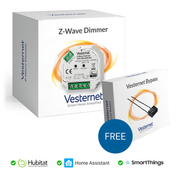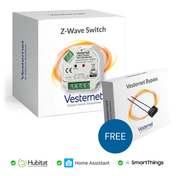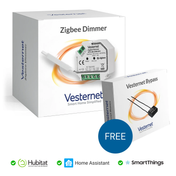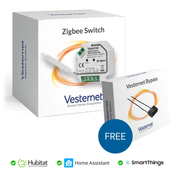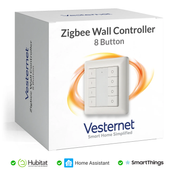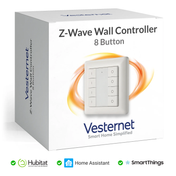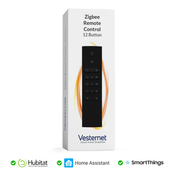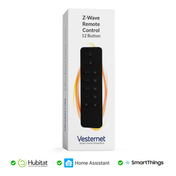
While Z-Wave, Zigbee & WiFi Wall Switches & Dimmers aren't quite as flexible as Z-Wave, Zigbee & WiFi Modules, they can still be used to control pretty much anything you can think of - lighting, power, pumps, blinds, awnings, heating, cooling, gates... the list is endless. Combine them with other Smart Home devices like sensors and you can turn your home from dumb to Smart!
Manufacturers of Z-Wave, Zigbee & WiFi Wall Switches & Dimmers usually stick with one of three main types - Relays, Dimmers and those designed to control Blinds / Shutters (or other motorised appliances). This typically means that you only have the choice between manufacturers to contend with, where some will offer more advanced capabilities and others will offer simpler functionality, often at a cheaper price. Remember that you can mix and match manufacturers on the same system as they are all compatible - more information can be found in our Understanding Compatibility guide.
There is of course one other important aspect to consider, that of style / look and feel. Whereas with a Module you can retain your existing switches, or choose new ones to suit your tastes, with Wall Switches & Dimmers you are restricted to the style, size, layout and colour that the manufacturer offers!
This guide explains what the different types of device are used for and gives extra details to help select between the manufacturers.
Wall Switches & Dimmers
Firstly, all devices within this category are what we term "actuators" - meaning that they physically control an electrical appliance, circuit or light. To do this they control the power to those circuits, so they do need to be wired into the circuits to be controlled. More information is available in our Getting Started guide, and to help you with the wiring, we have numerous wiring guides available in our Wiring Guides section.
Dimmer Switches - Z-Wave | Zigbee | WiFi
Dimmer Switches, as the name implies, enable you to control the brightness of a light. They are wired into the mains lighting circuit and control the voltage going to the lights on that circuit. Most Dimmers feature "trailing-edge" Dimmer electronics which are designed to work well with dimmable LED bulbs, but some still use "leading-edge" Dimmer electronics which can be problematical with LED bulbs, so it's worth double checking before buying. Of course, both types will work great with halogen bulbs and old style incandescent bulbs.
Dimmer Switches - things to think about:
- Neutral - Can the Dimmer Switch work without Neutral? This is important as most lighting circuits do not have Neutral available at the light switch (termed a 2-wire circuit). Unlike with Modules, you don't have the option to install at a different location!
- Multi-Way Switching - Unlike with Modules, most Dimmer Switches can't work in a normal wired 2-Way or 3-Way (or multi-way) switching setup. Instead, they often use Z-Wave Associations / Zigbee Group Messaging to provide this functionality via the mesh network instead.
- Trailing-Edge - The latest Dimmers feature "trailing-edge" control, which means they work well with dimmable LEDs. Older "leading-edge" Dimmers will not work very well with dimmable LEDs.
- Dimensions - Many Dimmer Switches are created for the European market and are sized to suit their requirements. This can mean that the physical dimensions of the device faceplate does not match UK standards, making them difficult to match with UK sized pattresses (back-boxes).
- Physical Installation - Dimmer Switches tend to be pretty big due to their construction, so they will need a reasonably deep pattress (back-box) for installation to allow room for heat dissipation and wiring to enter and exit safely. Check our our guide on physical installation which shows how to replace a pattress.
- Information - More information about these issues and other things to consider is available in our Inline Lighting guide.
Relay Switches - Z-Wave | Zigbee | WiFi
Relay Switches are physical switches, they include a set of switch contacts that physically open and close allowing you to control the power supplied to the connected load. Relay Switches are incredibly versatile, they can be used anywhere that you wish to turn an appliance or load on and off - lights, power circuits, pumps, gates, etc.
Relay Switches are also useful for lighting circuits where you wish to control lights that are not suitable for control from a Dimmer Switch such as fluorescent and high power outside lights. However, do note that all Relay Switches need Neutral.
Relay Switches - things to think about:
- Neutral - All Relay Switches need Neutral. Check that you have Neutral available.
- Multi-Way Switching - Unlike with Modules, most Relay Switches can't work in a normal wired 2-Way or 3-Way (or multi-way) switching setup. Instead, they often use Z-Wave Associations / Zigbee Group Messaging to provide this functionality via the mesh network instead.
- Single / Double / MORE - Some Relay Switches are available in versions that have single, double or even more outputs. A Single controls one circuit, a Double will control two separate circuits, and so on. Note however that some models offer "Dual" control versions, these typically will only control ONE local load and the other control is for use with Z-Wave Associations / Zigbee Group Messaging only.
- Dry Contacts - Most Relay Switches have the supply voltage as the output from the contacts. However, some offer "dry contact" versions - this means the contacts do not have a voltage (sometimes referred to as "volt-free") on them. This allows them to be used as pure switches in such things as alarms, or perhaps for controlling a low voltage DC circuit.
- Dimensions - Many Relay Switches are created for the European market and are sized to suit their requirements. This can mean that the physical dimensions of the device faceplate does not match UK standards, making them difficult to match with UK sized pattresses (back-boxes).
- Physical Installation - Relay Switches tend to be pretty big due to their construction, so they will need a reasonably deep pattress (back-box) for installation to allow room for heat dissipation and wiring to enter and exit safely. Check our our guide on physical installation which shows how to replace a pattress.
- Information - More information about these issues and other things to consider is available in our Appliance Control & Power Monitoring guide.
Blind, Curtain & Shutter Switches - Z-Wave | Zigbee | WiFi
Motor Switches are similar to Relay Switches as they have switch contacts, but have been designed specifically to control motors in things like blinds, curtains and shutters. They allow the device to be calibrated so that it knows the position of the motor, or rather, what it is controlling - so it can know if a blind is open, closed, 50% open etc, allowing you to have it open or close to preset positions.
Blind / Curtain / Shutter Switches - things to think about:
- AC Motors - Motor Switches are designed to control AC mains (230V AC) motors only.
- Neutral - Like Relays, Motor Switches also need Neutral. Check that you have Neutral available.
- Dimensions - Many Motor Switches are created for the European market and are sized to suit their requirements. This can mean that the physical dimensions of the device faceplate does not match UK standards, making them difficult to match with UK sized pattresses (back-boxes).
- Physical Installation - Motor Switches tend to be pretty big due to their construction, so they will need a reasonably deep pattress (back-box) for installation to allow room for heat dissipation and wiring to enter and exit safely. Check our our guide on physical installation which shows how to replace a pattress.
- Information - More information about these issues and other things to consider is available in our Climate & Comfort guide.
Getting Help and Advice
Hopefully this guide has helped clarify what options are available, what the different Z-Wave, Zigbee & WiFi Wall Dimmers & Switches do, and shown the comparison between manufacturers. If you need any further help or advice, contact Vesternet and we will do our best to answer all your questions.

